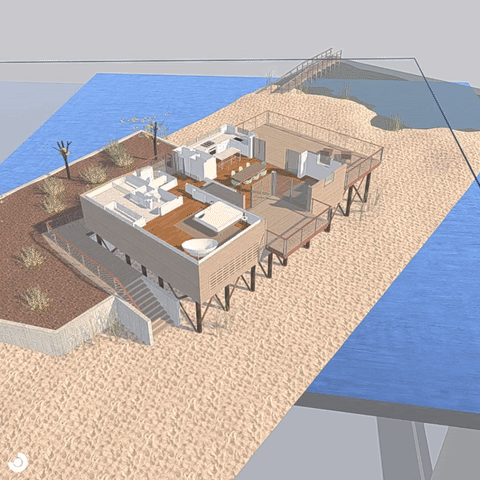
Each year, user experience (UX) experts from across the globe gather to discuss real-world UX challenges at the World Usability Congress in Graz, Austria.
Attendees represent a wide variety of industries, from VR and robotics to motion design and e-commerce.
This year, Ana Garcia Puyol, IrisVR’s Director of UX and Integrations, was invited to the Congress to talk about crafting user experiences in virtual reality for the built industry. Ana has played a huge part in designing the UX for our software, Prospect — so it’s great to see her take center stage and share what she’s learned from working on the first VR for AEC product.
Here are some of the highlights from Ana’s talk, Remodeling Reality: Revolutionizing Design with VR.
Designing for humans
First, Ana talked about the concept of design for humans.
For Ana, designing with real people in mind means finding a “pain point” in a common workflow, then solving it with more usable tools.

As a former Computational Designer at Thornton Tomasetti’s CORE studio, Ana understands the pain points architects face each day — and has spent years thinking about implementing technology to solve design problems.
In AEC, she said, communicating design intent is a primary pain point.
Different stakeholders in a design process don’t have a common language for talking about how a project will be built. Architects might feel most comfortable explaining design intent with 3D models or highly technical 2D drawings, while the client might not understand what these assets represent. As a result, the client could agree to a design decision that they don’t end up liking in reality.
Ana went on to explain how virtual reality can make design easier and less error-ridden. Space and size are common languages that anyone can interpret, and VR allows all stakeholders to speak them.
Combining familiarity and magic
Next, she discussed how a mixture of familiarity and magic is important in designing user experiences for emerging technology products.
Prospect embodies this principle by providing the AEC industry with familiar tools in a new, “magical” context.
One way Ana and the team have applied that concept to Prospect is by having VR experiences automatically begin with Scale Model Mode.
Scale Model Mode mimics a process familiar to architects — reviewing a scaled physical model around a table — while offering powerful, interactive tools that couldn’t exist in the physical world.

Scale Model Mode provides AEC professionals with a familiar workflow while adding the magic of interactive technology.
Conforming and differentiating in a new medium
The familiarity/magic discussion led Ana to her last question: how to find a balance between conforming and differentiating while branding for a new medium.
Ana talked through IrisVR’s own branding process to give listeners an insider’s view on developing UX for VR.
For IrisVR, Ana said, the project involved “talking the talk” of AEC professionals by using terms in product messaging they’re already used to.
But it also meant “walking the walk” of the industry by looking at existing design precedents. To do so, Ana and the IrisVR team worked to understand the requirements of a scalable design system — and then develop a tool that could take that existing paradigm to the next level.
You can watch Ana talk about all of this and more below - and we'd love to hear your thoughts on the talk in the comments section!
.png?width=212&name=Prospect%20by%20IrisVR%20Black%20(1).png)
